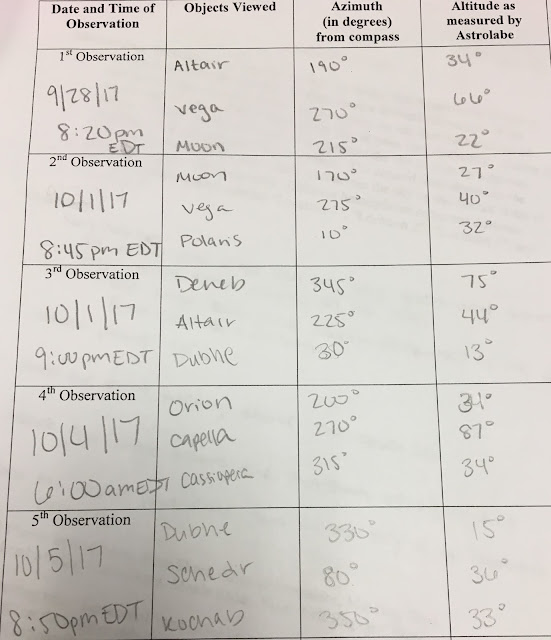Orionid meteors are debris from Halley's Comet burning up in the atmosphere that appear to come out of the constellation Orion. and are best seen from midnight to dawn. Over the course of this weekend, I was only able to see one, and it was by mistake! I was sitting outside early Saturday morning, looking up, and I just turned my head and woah! So that was what I was looking for! Friday night, I had been watching for one, and wasn't sure whether or not I had seen one, because I wasn't sure what it would look like. I would see stars flicker or disappear; but it was probably just my brain messing with me. But when I saw it for real, I knew. It was a quick flash, light streaked across the sky. But it was near Cassiopeia...to the north...Orion was to the south. I knew there'd only be approximately 18 meteors an hour, so I knew my chances of seeing a lot were slim, but I found it odd that the only one I did see came from the "wrong" part of the sky.
I didn't take any measurements because I just wanted to watch for another shooting star (negative), but I did get to see new stars and constellations like Sirius and Taurus that I hadn't seen before.
Of course I wish I'd seen more of the Orionids (next year!!), but it was a beautiful sky and a peaceful and memorable experience.
read my previous post about the Draconoid Meteor Shower here: http://northstargazer.blogspot.com/2017/10/draconid-meteor-shower.html
read my previous post about the Draconoid Meteor Shower here: http://northstargazer.blogspot.com/2017/10/draconid-meteor-shower.html











